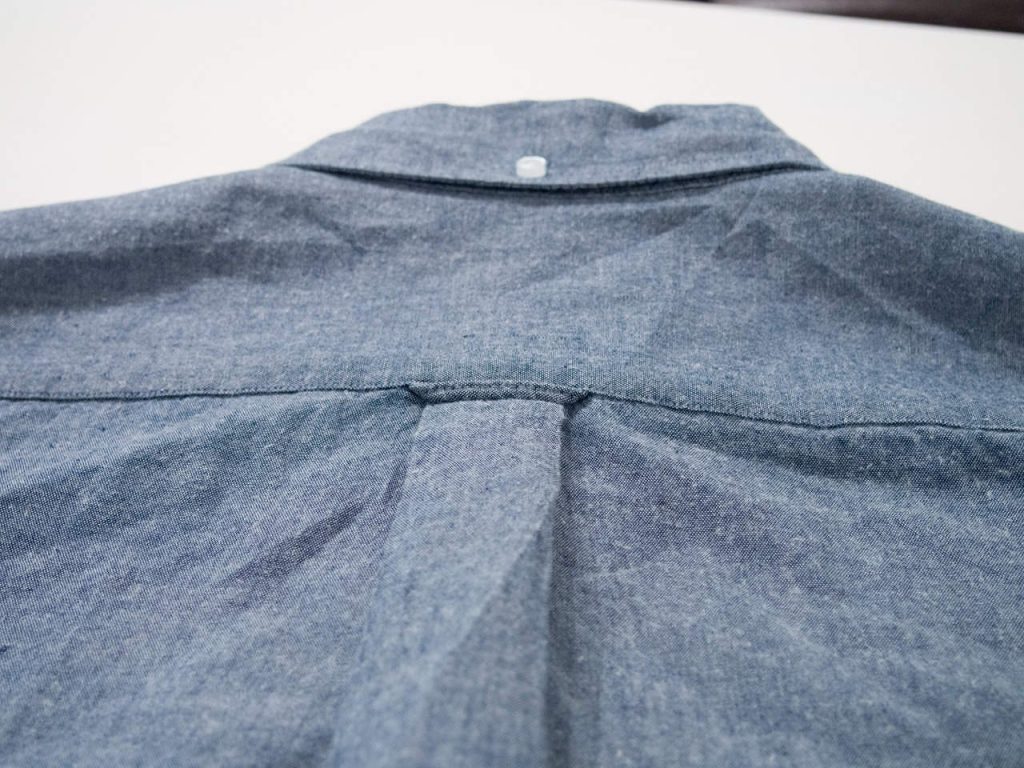You won’t believe what a shirt loop is for. See below what it is about. If you’ve ever noticed a small fabric loop sewn into the back of a man’s dress shirt and wondered what it’s for, you’re not alone. At first glance, it looks like a decorative detail — but this modest feature actually has a long and interesting story that connects fashion, function, and even a bit of romance.
From Practical Use to Fashion Symbol
Originally, this little loop wasn’t about style at all. Its practical beginnings trace back to the mid-20th century, particularly among American sailors. Working in tight quarters with limited space, sailors needed an easy way to hang up their clothes without using hangers or wardrobes. The solution was simple: a stitched loop that allowed them to hang their shirts on hooks. It prevented wrinkles and kept their uniforms neat and dry.

When sailors returned home, their practical clothing details gradually made their way into everyday fashion. Manufacturers began adding the loop to casual and dress shirts, turning a seafaring convenience into a signature touch of American style.
The “Locker Loop” and Its Campus Popularity
By the 1960s, the shirt loop had become known as the “locker loop” or sometimes even the “fairy loop.” The nickname “locker loop” came from college students, who used the small tab to hang their shirts in gym lockers between classes. This allowed young men to avoid wrinkles while keeping their shirts crisp and ready to wear.
The style became so popular on Ivy League campuses that it was adopted by major shirt brands like Gant, which helped establish it as a hallmark of “preppy” fashion. The Gant company, which supplied shirts to many Ivy League universities, noted that the button-down shirt with the back loop quickly became part of the uniform for the well-dressed American college man.
A Secret Romantic Code
Interestingly, the loop also carried a social meaning in the 1960s. In campus culture, it was rumored that if a man removed the loop from his shirt, it symbolized that he was in a relationship — “taken,” in modern terms. It became a subtle, wordless way to show that one’s heart was already committed. Whether this was a widespread practice or just a fun student myth, it added an unexpected romantic twist to an otherwise simple garment feature.

The Loop in Today’s Fashion
In modern fashion, the loop has mostly lost its original purpose, but it remains a nostalgic detail. Many brands still include it as a nod to tradition. It doesn’t serve much practical use now — after all, most people don’t hang shirts on hooks anymore — yet it continues to represent timeless craftsmanship and a link to fashion’s past.
When paired with jeans or chinos, a shirt with a back loop still radiates casual sophistication. Fitness enthusiasts or travelers may even use it for its original function: to hang a shirt quickly in a locker or on a hook while on the move. What began as a sailor’s necessity has become a small yet elegant reminder of practicality meeting style.
Why It Still Matters
The charm of the shirt loop lies in its quiet presence. It represents an era when clothing was built not just for looks but also for convenience and endurance. In a world where fashion changes faster than ever, small, enduring details like this one remind us that good design never truly goes out of style.
So, next time you notice that little loop on your dress shirt, you’ll know it’s more than just a random stitch — it’s a piece of history woven into fabric, connecting generations of sailors, students, and modern men who appreciate the blend of elegance and purpose.

















